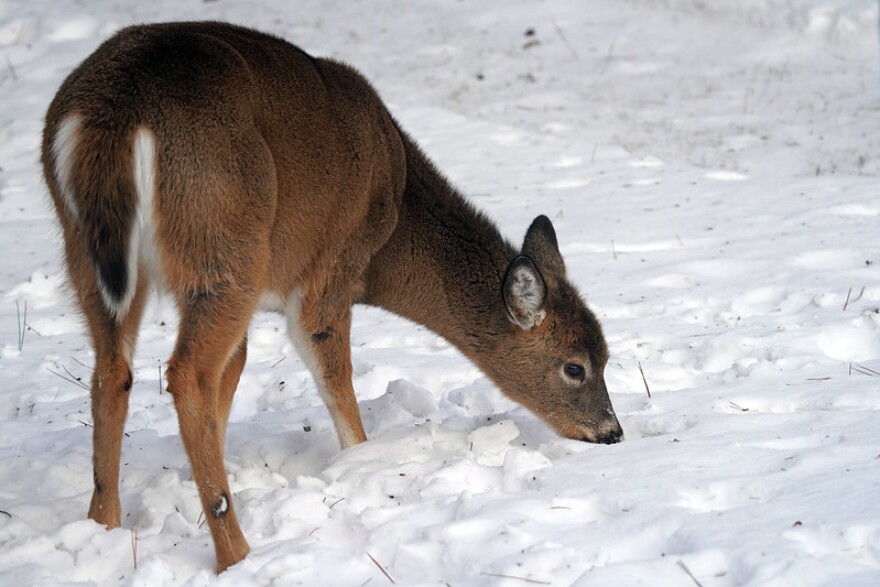Each month, the KAXE Morning Show brings a new segment of the Local Forest History series. This month focuses on how wildlife populations have fared in the twenty-first century, with an emphasis on moose, elk and deer populations.
Blane Klemek is our guest this month. He is a Minnesota Department of Natural Resources regional wildlife manager, where he leads wildlife professionals and operations in 23 counties in northwestern Minnesota.

Wildlife recoveries
Since the 1970s, Bald Eagles, Trumpeter Swans, Wood Ducks, Canada Geese, gray wolves and black bears have all regained healthy populations after devastating losses. Wild turkeys are now found in every Minnesota county.
How are the herds?
Other species have not been so successful. Moose, for instance, have struggled — primarily due to climate change and parasites. While the northeastern population has remained relatively stable over the past few years, moose numbers have been declining in northwestern Minnesota. This is partly due to an increase in the white-tailed deer population: white-tailed deer carry a parasite fatal to moose.

In contrast to the moose, white-tailed deer populations are up from the early 1970s. At that time, hunting season was closed due to low population. However, in some areas of the state, deer populations are down from recent years.
This recent decline is primarily due to a couple of hard winters: deer have a hard time surviving and successfully producing offspring when winters have deep snow or particularly cold temperatures.
Blane predicts the mild winter of 2023-24 may help to facilitate their recovery.
Minnesota has a healthy native elk herd of about 300 in the northwestern part of the state. The Fond du Lac Band has developed a plan to reintroduce elk to areas near Cloquet. If all goes as planned, relocation of elk from the northwest herd could begin as early as 2026.
The outlook
The future is concerning, due to a variety of contributing factors. Among these are the combined forces of climate change, reduced participation in hunting, and habitat loss, which all affect wildlife populations and health.
Blane cited continued funding from the Clean Water Land and Legacy Amendment and strong partnerships with agencies and conservation organizations as positive aspects for the future of Minnesota’s wildlife.
Funding for this project was provided by the Minnesota Environment and Natural Resources Trust Fund as recommended by the Legislative-Citizen Commission on Minnesota Resources (LCCMR).







